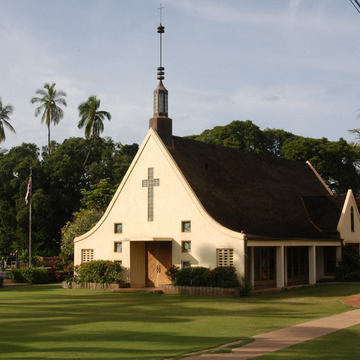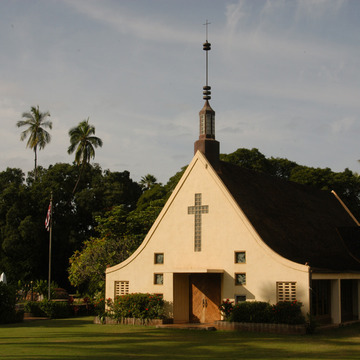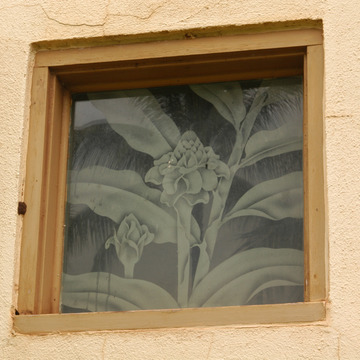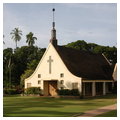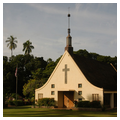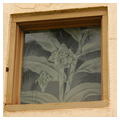A good example of late Moderne design, this church's form and plan resemble those of the Hanapepe United Church of Christ (KA13). Its Art Deco doorway, square windows with etched glass depicting island flora, glass-block cross, flared gable end, and copper lantern well reflect its period and place. The side lanai protect the nave's double doorways, which softly light the interior while also providing cross ventilation.
This congregation's building history is a dramatic one. The present church is the sixth on the property. Waiola's predecessor, Wainee Church, the initial missionary endeavor on Maui, was founded in 1823. After using two thatched churches, in 1827 the congregation constructed the first stone church in the kingdom. This structure was replaced in 1859 to memorialize Lahaina's escaping the smallpox epidemic which ravaged the Islands in 1853– 1854. In 1894, supporters of the overthrown Queen Liliuokalani burned that building to the ground after the pastor, Reverend Pali, suggested abolishing the monarchy. Henry Perrine Baldwin replaced that structure with a frame building in 1897. Fifty years later that building went up in flames but was repaired, only to have the Kaaula wind of January 1951 blow it down. The present hollow-tile and concrete building superseded that ill-fated church and the congregation changed its name from Wainee, meaning moving water, to Waiola, the water of life.
The adjoining church cemetery is one of the oldest Christian graveyards in the state and contains the headstones of a number of aliʻi (members of the Hawaiian ruling class) and early missionaries. The large Hawaiian-style assembly hall, on the other side of the church, with its imposing double-pitched hipped roof, inset lanai, and lava-rock base dates from 1996 and was designed by Tom Cannon of Architects Maui.
Kenneth Sato (1908–2006), a Honolulu-based civil engineer, was born in Kahuku. He designed a number of churches in the late 1940s and early 1950s, and was the owner of the Kewalo Steel Company.


